27 August 2019
Cluster and XMM-Newton pave the way for SMILE
Posted by larryohanlon
A joint European-Chinese spacecraft, SMILE is currently scheduled for launch in 2023. It will be placed in a highly inclined, elliptical orbit around Earth, which will take it as far as 120 000 km from our planet.
One of its primary objectives will be to observe the Sun-Earth connection, particularly the interactions on Earth’s dayside between the solar wind – a flow of charged particles streaming from the Sun into interplanetary space – and the magnetosphere of our planet.
The magnetosphere is an invisible magnetic bubble that shields the planet from the non-stop, but variable, bombardment of solar particles – mainly protons and electrons.
SMILE will carry four instruments to observe this ever-changing celestial battlefield: a light ion analyser, a magnetometer, a soft X-ray imager, and an ultraviolet aurora imager.
The soft X-ray imager, which is designed to detect and image low energy X-rays, will observe the outer regions of Earth’s magnetosphere for up to 40 hours per orbit.
These regions include the magnetosheath, which lies behind the bow shock, where the flow of solar wind particles is dramatically slowed down, and the magnetopause, which is the outer boundary of Earth’s magnetosphere.
Of particular interest to scientists who are preparing for the SMILE mission is the density of neutral hydrogen atoms near the magnetopause. This is where the signal at low-energy X-rays, or soft X-ray signal, is expected to reach its peak.
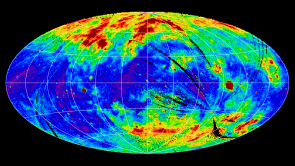
ROSAT all-sky X-ray image at 0.25 keV. Credit: Max-Planck-Institut für extraterrestrische Physik (MPE) and S. L. Snowden
The X-rays are generated when highly charged particles from the solar wind collide with hydrogen atoms in Earth’s magnetic environment – a process known as solar wind charge exchange. When the hydrogen density and solar wind flux are higher than average, the result is a stronger emission of soft X-rays. At such times, SMILE will be able to provide frequent, high-resolution X-ray images and movies of the interaction region.
The resulting images – the first of their kind – will help scientists understand the large-scale interactions between the outer magnetosphere of our planet and the solar wind. By searching for the soft X-ray peak, SMILE will trace the motion of the magnetopause and reveal some of the secrets of how magnetic field lines snap and reconnect on a global scale.
In order to improve our understanding of what happens when the solar wind charge exchange process occurs, scientists in Europe, China and the United States are utilising data from satellites such as ESA’s XMM-Newton X-ray observatory and the Cluster quartet of satellites flying through Earth’s magnetosphere. The data enable them to study actual soft-X-ray measurements made in near-Earth space, and to simulate what SMILE is likely to observe.
In 2019, Hyunju Connor of University of Fairbanks, Alaska, USA, and Jennifer Carter, University of Leicester, UK, published a paper in the AGU journal JGR: Space Physics, in which they investigate neutral hydrogen density at distances from Earth of about 64 000 km – the average distance of the subsolar magnetopause – using XMM-Newton observations in soft X-rays.
XMM-Newton is an astrophysics observatory designed to study highly energetic phenomena across the cosmos, such as black holes and remnants of supernova explosions, which shine brightly in X-rays. The satellite follows a highly elliptical, 48-hour orbit around Earth.
While XMM-Newton’s targets lie well beyond our planet, the line of sight of its X-ray imagers may sometimes pass through Earth’s dayside magnetosheath, resulting in a diffuse soft X-ray emission in the foreground of the observation.
This emission is usually regarded as an unwanted contaminant by astrophysicists, but it provides an opportunity for plasma scientists, who have been analysing these data for many years, to investigate solar wind charge exchange events in the outer magnetosphere. These studies are now proving of value during preparations for the SMILE mission.
In their paper, Connor and Carter examined 103 time-variable solar wind charge exchange emission events that astronomers had detected during nearly 9 years of XMM-Newton X-ray observations. Among the top 10 strongest events, they found two occurrences on 4 May 2003 and 16 October 2001 for which there were also magnetosheath data available from the Cluster spacecraft and the Japanese Geotail satellite, as well as solar wind data from NASA’s ACE and WIND spacecraft, part of the OMNI mission.
For these events, the scientists compared these in situ measurements with simulations generated using a computer model known as the Open Geospace Global Circulation Model, or OpenGCCM, which uses solar wind data as input. The in situ data were crucial to verify the validity of the model.
After confirming a good agreement between the modelled and observed density in the magnetosheath, the scientists were able to determine the density of neutral hydrogen particles near the magnetopause. They found that the estimated neutral density was high enough to produce strong soft X-ray signals, confirming that SMILE should provide exciting new images of the dynamic Sun-magnetosphere interaction.
The scientists are now carrying out statistical analysis on a wider sample of XMM-Newton data, in order to achieve a more comprehensive characterisation of dayside neutral hydrogen densities, taking into account variations in solar activity.
Meanwhile, another 2019 paper in JGR: Space Physics led by Tianran Sun of the National Space Science Centre in Beijing, China, presented simulations of the soft X-ray emission on the dayside magnetopause and the cusps under various solar wind conditions.
These simulations are helping to predict the behaviour of a wide range of phenomena relevant to SMILE’s soft X-ray imager observations, such as changes in the X-ray flux or in the magnetopause location, depending on the incoming solar wind flux. In parallel, these studies are also supporting the development of the methodology that will be used to reconstruct the 3D structure and location of the magnetopause from the 2D images that the SMILE soft X-ray imager will obtain.
REFERENCES
Connor, H.K., & Carter, J.A. (2019). Exospheric neutral hydrogen density at the nominal 10 RE subsolar point deduced from XMM-Newton X-ray observations. J. Geophys. Res.: Space Phys., 124, 1612– 1624. https://doi.org/10.1029/2018JA026187
Sun, T.R., Wang, C., Sembay, S.F., Lopez, R.E., Escoubet, C.P., Branduardi-Raymont, G., et al. (2019). Soft X-ray imaging of the magnetosheath and cusps under different solar wind conditions: MHD simulations. J. Geophys. Res.: Space Phys., 124, 2435–2450. https://doi.org/10.1029/2018JA026093
This post was originally published on the ESA website.


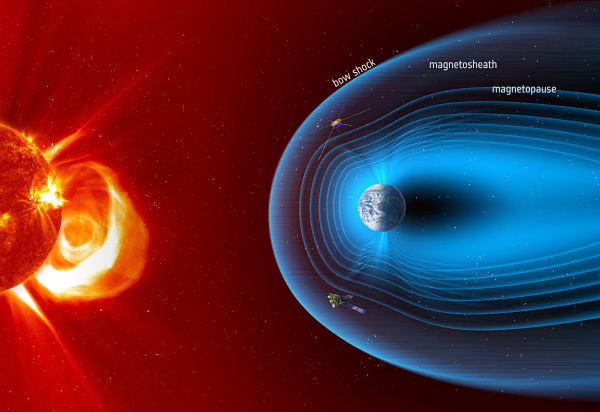
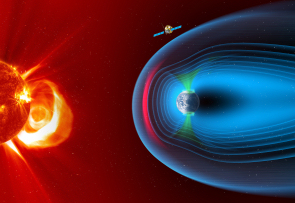
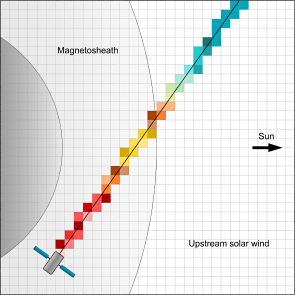
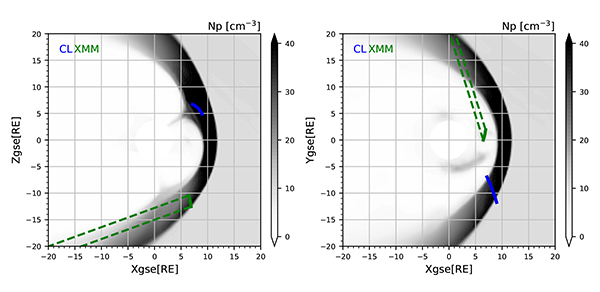
 GeoSpace is a blog on Earth and space science, managed by AGU’s Public Information staff. The blog features posts by AGU writers and guest contributors on all sorts of relevant science topics, but with a focus on new research and geo and space sciences-related stories that are currently in the news.
GeoSpace is a blog on Earth and space science, managed by AGU’s Public Information staff. The blog features posts by AGU writers and guest contributors on all sorts of relevant science topics, but with a focus on new research and geo and space sciences-related stories that are currently in the news.